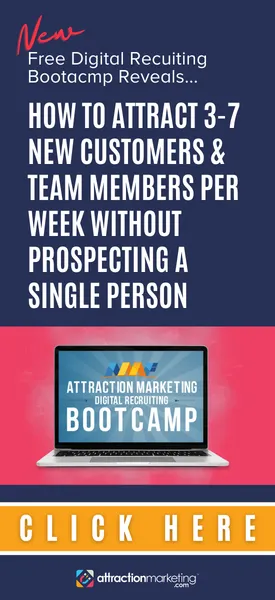Hot take: the days of dismissing the effectiveness of influencer marketing are over.
Brands of all shapes and sizes are scrambling to find content creators for a reason. Influencers can reach and engage customers in ways that traditional ads simply can’t.
And sure, brands should be skeptical of trendy and shiny new marketing tactics.
Spoiler alert: influencers aren’t breaking news in 2024! Brands have been partnering with creators for well over a decade now.
Still, some brands still have reservations about influencer marketing. With so much pressure to prove ROI and justify campaigns, we totally get it.
That’s why we compiled this list of timely influencer marketing statistics to share with your team.
General Influencer Marketing Effectiveness Statistics
“Okay, but does influencer marketing actually work? Where’s the proof?”
From UGC to awareness, we’ve seen firsthand how brands benefit from creator collaborations.
Don’t just take our word for it. Again, influencer campaigns aren’t uncharted territory anymore.
10+ years’ worth of campaigns and research can clue brands in on how well influencer marketing works. The following influencer statistics illustrate how creators are a staple of doing business today.
1. 87% of marketers partnering with influencers will maintain or increase their investment in 2024.
This might be the most eye-opening stat on our list.
Conventional wisdom says that more and more brands are investing in creators, right?
But the fact that so many of these brands are maintaining (or upping!) their spending is notable.
That’s because creators are a key piece of so many brands’ marketing funnels. This stat highlights how influencers aren’t a passing trend or a bandwagon tactic.
2. 72% of marketers say that customers acquired from influencer marketing campaigns are of higher quality than other types of campaigns.
That sounds about right! After all, authentic advertising attracts authentic customers.
There’s no “right” reason why influencer marketing campaigns yield better results than old-school ads. That said, the authenticity of creators are a big factor for sure.
Because when your brand influencers resemble your target audience, you’re more likely to attract attention from people who are legitimately interested in what you’re selling.
3. Influencers boast the second-highest ROI compared to other modern marketing tactics.
This stat is valuable for brands justifying creator campaigns to stakeholders. We know all too well that explaining influencer marketing to your boss can be tricky.
Keep in mind that influencer marketing is second only to short-form video when it comes to ROI. That’s why brands are running video campaigns featuring creators on both TikTok and Instagram. Bite-sized videos offer countless creative ways to show off products in action.
4. 60% of marketers say influencers deliver better ROI than traditional ads.
Brands rely on creator campaigns to hit a wide range of marketing goals. Some of these goals (like earning UGC or reviews) can’t really be done through paid ads alone.
We should note that influencer campaigns and paid ads shouldn’t be a matter of either-or. In fact, ads featuring creators are among the most powerful types of paid campaigns.
5. The influencer market is projected to grow by 28.6% this year (from $16.4 billion in 2022 to an estimated $24 billion market in 2024).
The staggering growth of the creator space speaks for itself and brings all of these influencer marketing statistics full circle.
Brands don’t consistently invest in any marketing tactic “just because.” More and more brands have dedicated influencer budgets because they’re seeing results.
As noted above, influencer campaigns can be used in conjunction with so many other marketing channels. This helps brands see the much-needed ROI they’re chasing. That’s much of why the market size has increased consistently YoY.
.jpeg?width=700&height=556&name=Influencer-Marketing-Market-Size-1-png%20(1).jpeg)
Source: Influencer Marketing Hub
Influencer Content Statistics
It’s no secret that creator content dominates social media. Platforms like TikTok thrive on consumers eager to recommend and research new products.
That’s why creators are such an integral part of the modern buyer’s journey.
These influencer constant statistics highlight the value of creators posting about your brand.
6. 56% of consumers claim to have purchased a product after seeing an influencer use it.
We often say that seeing is believing for modern consumers.
And influencers help brands introduce products to new customers in a personable way.
High volumes of creators posting about your brand is a snowball effect that boosts your visibility on social media. The more touchpoints you can make with your target audience, the better.
%20(1).png?width=350&height=759&name=IMG_0015%20(1)%20(1).png)
Source: @TikTok
7. More than three-quarters of consumers claim that trusting brands is becoming more difficult.
Brand trust is hard to come by these days. This signals the importance of brands marketing their products with a much-needed human touch.
8. The average influencer engagement rate on Instagram is 1.75x that of the average brand.
No surprises here! Organic reach has been falling for brands for years now.
Influencers’ high engagement rates serve as a way to bypass fickle social algorithms. This applies to Instagram and TikTok alike. Creators can instantly extend your brand’s reach beyond your own social followers. This means more engagement and eyes on your products.
9. 39% of consumers prefer to see branded social posts featuring real people (ex: customer testimonials, product demos).
The importance of social proof can’t be overstated for brands today. Modern buyers need to see more than a slideshow of lifeless product photos before they’re willing to buy anything in 2024.
Creators make it easier for people to imagine your product in their hands. This explains the popularity of creator reviews and tutorials on TikTok and IG.
10. 92% of TikTok users claim they’ve purchased a product they saw promoted on the app (or would buy one in the future).
TikTok has become the go-to platform for brand discovery for young consumers. Look no further than the rise of social search and how products go viral on the platform all the time.
The concept again is simple: shoppers want to see real people promote real products. The lo-fi feel of TikTok content helps consumers see how your products fit into their daily lives.
Influencer Advertising Effectiveness Statistics
The benefits of organic influencer marketing for social media are well-documented.
But the fact that creators instantly boost the performance of paid campaigns is important, too.
You don’t have to look hard to find brands weaving influencer and user-generated content into their paid social strategies. Thankfully, doing so is easier than ever thanks to the rise of:
Pro-tip: don’t treat influencer marketing as a standalone tactic. Consider how creator content can strengthen your marketing funnel elsewhere.
The following stats illustrate the effectiveness of influencer advertising for brands.
11. According to Meta, brands that run creator-based ad campaigns see a 15% increase in ROAS (return on ad spend) over non-creator campaigns.
As we said earlier, influencer content is proven to boost the performance of paid ads. This stat from Meta highlights the value of branded content done right.
12. TikTok claims that Spark Ads (creator-based ads) deliver 142% higher engagement rates than other ad types.
Note that Spark Ads are creator TikToks boosted via paid promotion. This stat shows how organic creator content can serve as the basis for an ad campaign with limited edits on your part.
For example, fashion brand Mango often reposts influencer videos to both advertise their brand and show their products in action. These types of posts are ad-ready and prime for engagement.
_2.jpg?width=350&height=641&name=IMG_4992%20(1)_2.jpg)
Source: @mango
13. Instagram says that branded content and paid ads combined are 90% more likely to drive cost-effective results than either tactic individually.
Like Spark Ads, Branded Content ads on Instagram transform top-performing creator content into paid posts. These types of ads perform well on IG just as they do on TikTok.
The takeaway? Regardless of platform, consumers would rather see real people over actors.
Micro-Influencer Effectiveness Statistics
Being an influencer has much less to do with follower count than it used to. That’s a good thing!
Instead, trustworthiness and authenticity are what define a valuable creator. Anyone who can literally influence somebody to make a purchase can be an “influencer.”
Our take? The best creators are everyday consumers posting about products they legitimately love.
Food for thought: smaller creators maintain a sense of authenticity because they’re not celebrities. That’s why micro-influencers are still so popular even among brands with massive followings.
One of the biggest benefits of working with micro-influencers is that they empower brands to stretch their budgets. With a high volume of micro-influencers, brands can earn more content and run long-term influencer campaigns. This results in greater ROI.
14. 56% of consumers would rather follow “normal people” on social media versus celebrities.
Micro-influencers are effective because they reflect the everyday consumers that follow them. Unlike lavish and polished celebrity influencers, small creators benefit from being “real.” That realness is what makes them relatable and trustworthy.
15. 88% of people trust recommendations from people they know over any other marketing channel.
Chances are you’d trust your friends’ recommendation for a restaurant over a random billboard, right? The same rules apply when it comes to products on social media. Recommendations from smaller creators closely resemble recs from our own friends and family.
16. Micro-influencers see up to 60% higher engagement rates than macro-influencers.
The bigger your audience, the more diluted your followers become in terms of quality. The phenomenon of fake followers is a problem for many celebrity influencers on Instagram.
As a result, many celebrity posts will only reach a fraction of their followers.
Contrast this will smaller creators who’ve built engaged communities and followings because they’re authentic. These creators earn high engagement because of their creativity and knack for knowing what their audience wants to see. Likewise, they can worry less about restricted algorithmic reach.
17. Micro-influencers with fewer than 5,000 followers see the highest engagement rates on TikTok (17.9%).
Recent research notes that the smallest TikTok micro-influencers boast the platform’s highest engagement levels. This stat yet again highlights why follower count isn’t the be-all, end-all of influencer engagement.
Which of These Influencer Marketing Statistics Stand Out to You?
Whew, that’s a lot of data to get through! The top takeaway from the stats above, though?
Influencer marketing is here to stay and its value for brands is crystal clear.
Eye-catching UGC. Increased brand loyalty. High-converting ads. The list goes on and on.
There’s no denying the moving pieces involved in launching a creator campaign from scratch. The good news? Getting the benefits of influencer marketing doesn’t have to be a time-sink.
That’s where Statusphere’s micro-influencer marketing platform can help.
Our platform programmatically matches brands with relevant creators based on your specific target audience and product. We make sure that your product gets into the hands of creators that actively want to promote your brand.
Beyond that, our platform handles all of the heavy lifting related to matchmaking, fulfillment and performance tracking. We offer brands a way to partner with relevant creators at scale.
Want to learn more about how our platform works? Get in touch with one of our consumer-to-consumer marketing specialists to see how we can get more creators posting about your brand ASAP.
This article was first published in October 2017. It was last updated April 8, 2024.












Leave a Reply